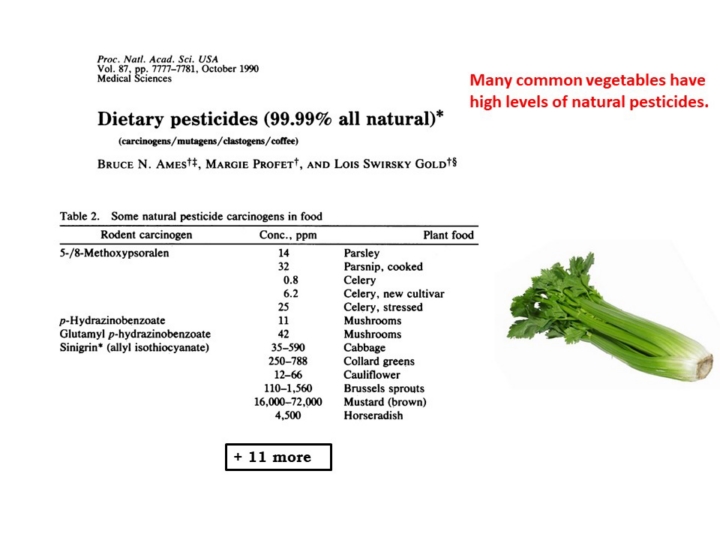 |
Here's an example: celery. I'm sure many of you in the room have eaten
celery, you've enjoyed it, it's been nice, but there's a nice story about
celery. The ladies who used to pack up celery for sale in the supermarket
would take the celery and cut it up in pieces so it would fit nicely into
the package. And in doing so, they used to get the celery juice on their
skin, on the skin of their hands. And many realized that they were getting
a surface dermatitis as a result of this. And some of them even got a skin
cancer as a result of this. And of course they started wearing gloves
immediately. Why did it happen? It happened because of this compound:
5/8-Methoxypsoralen. This is something that celery uses to stop bugs from
eating it so that the bugs die. There are many different plants that we use
as food that also have this compound in them. This is a potent carcinogen,
a very dangerous carcinogen. But the amounts in the plant are extremely
small. It might cause a little damage to one or two cells, but your body is
able to repair these because we have very good repair mechanisms. So for
us, it really isn't a problem, but if celery was a GMO, you would not be
allowed to sell it, we wouldn't be allowed to eat it, it wouldn't be in the
supermarkets. And this is where it gets to be ridiculous. This is why the
product is important. It doesn't matter that maybe it's got some of these
compounds in it if it's still safe to eat, then it's safe to grow and safe
to sell. |
